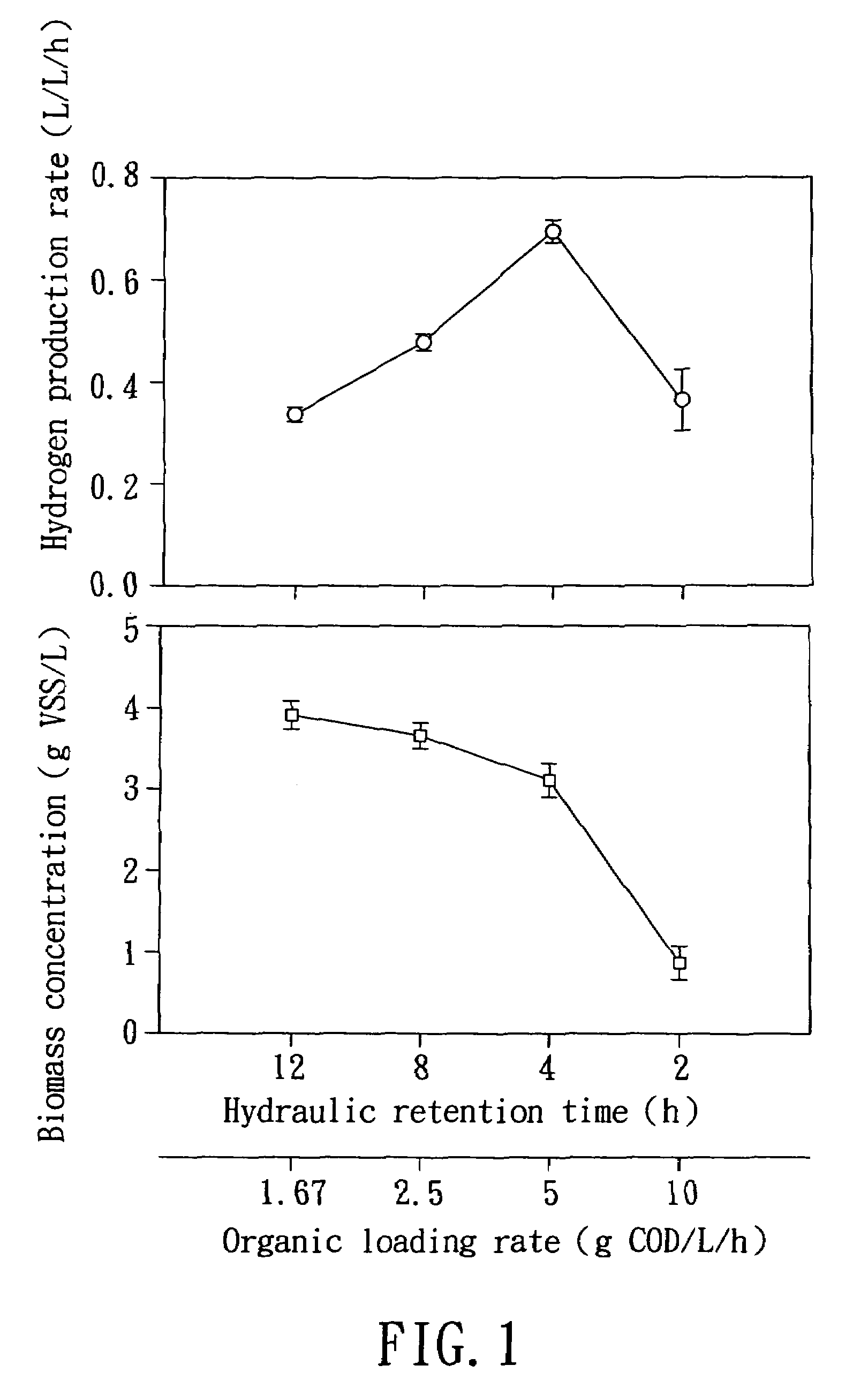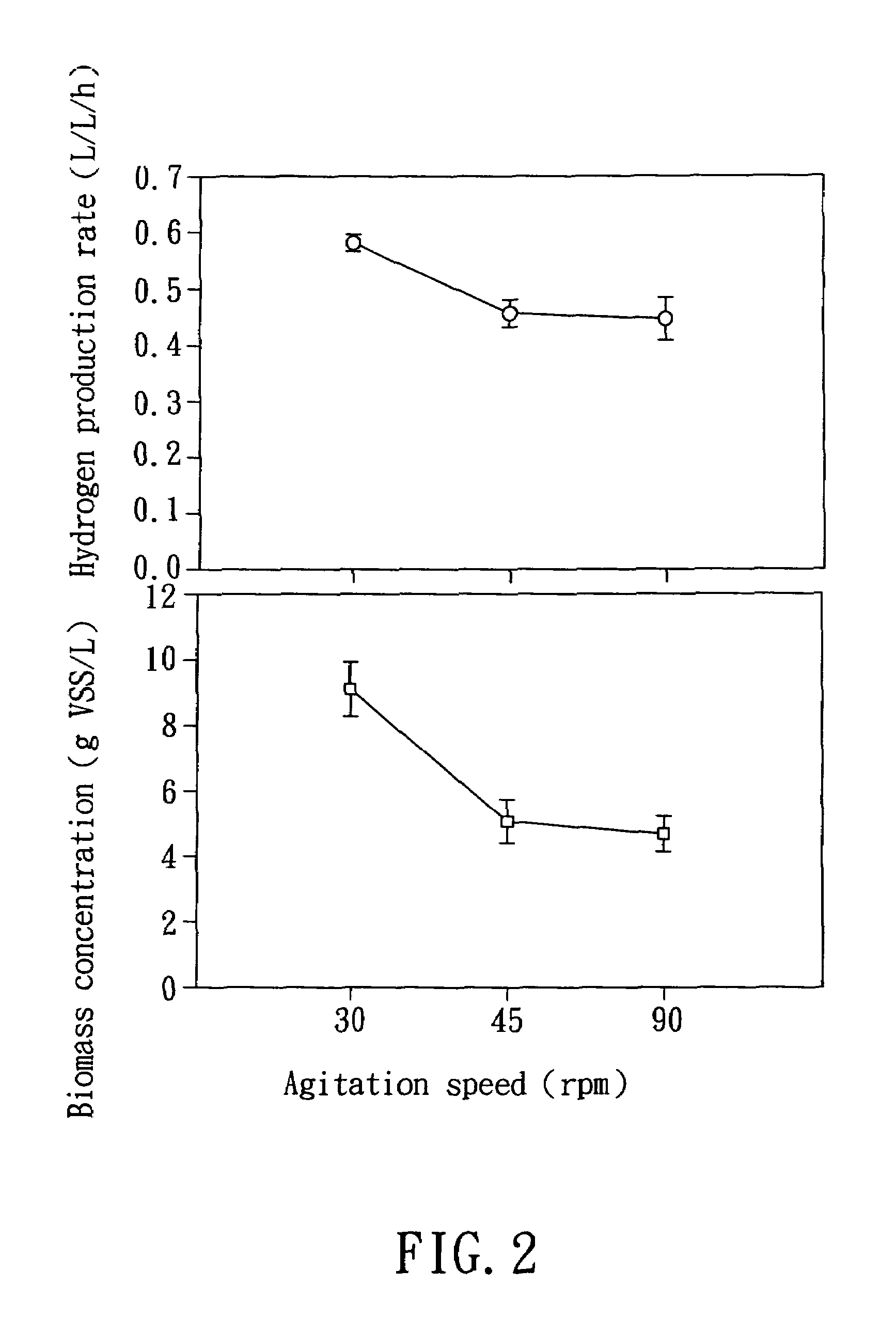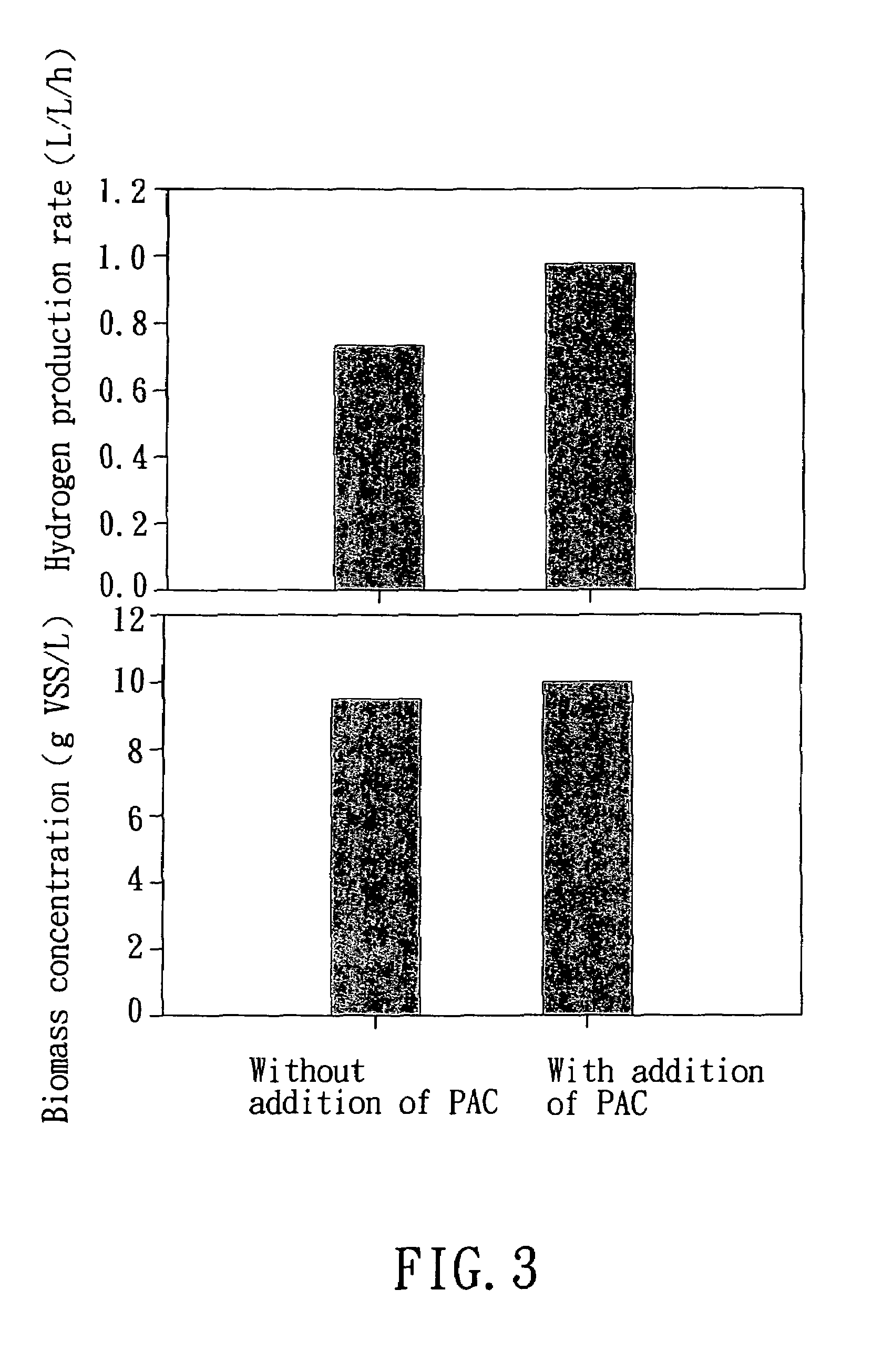Process for enhancing anaerobic biohydrogen production
- Summary
- Abstract
- Description
- Claims
- Application Information
AI Technical Summary
Benefits of technology
Problems solved by technology
Method used
Image
Examples
embodiments
A. Experimental Materials:
[0053]1. In the following examples, the organic waste for use as the seeding sludge was obtained from the sewage sludge from Li-ming Municipal Sewage Treatment Plant in Taichung City. The properties thereof are shown in Table 1.
[0054]
TABLE 1Properties of sewage sludgeItems testedNumerical ValuepH6.8Volatile suspended solid (VSS)(g / L)33.3Total suspended solid (TSS)(g / L)65.1[0055]2. In the following examples, the formulation of nutrient salts makes reference to the method described by G. Endo et al., (1982) in Proc. Soc. Civ. Engrs, 325:61-68. The ingredients thereof are shown in the following Table 2.
[0056]
TABLE 2Formulation of Nutrient SaltsIngredientsConcentration (mg / L)NH4Cl717NaHCO315000K2HPO4125CaCl2100MgCl2 • 6H2O100MnSO4 • 6H2O15FeSO4 • 7H2O25CuSO4 • 5H2O2CoCl2 • 5H2O0.125[0057]3. In the following examples, glucose or sucrose was used in the acclimation of the seeding sludge and as the artificial substrate in anaerobic fermentative hydrogen production...
example 1
Effect of Agitation Speed on Fermentative Hydrogen Production Process Using Continuous Stirred Tank Reactor
[0074]This example investigates the effect of agitation speeds on the process of anaerobic fermentative hydrogen production with the use of a continuous stirred tank reactor.
I. Preparation of a Seeding Culture Containing Granular Biomasses:
[0075]The preparation of a seeding culture containing biomasses was made substantially in accordance with the operating procedures described in connection with the above comparative example 1. The difference resides in that the mixture was acclimated at an agitation speed of 30 rpm for approximately 8 to 24 hours so as to obtain a seeding culture containing granular biomasses.
II. Process of Anaerobic Fermentative Hydrogen Production:
[0076]At an agitation speed of 30 rpm, sucrose (at a concentration of 30 g COD / L, equivalent to 17.8 g / L) was continuously fed to the continuous stirred tank reactor containing the seeding culture (having the gran...
example 2
The Effect of the Use of Glucose as a Substrate of Anaerobic Fermentative Reaction and the Use of Powdered Activated Carbon as a Carrier Upon the Anaerobic Fermentative Hydrogen Production Process
[0081]This embodiment investigates the effect on the anaerobic fermentative hydrogen production process with the addition of a powdered activated carbon as a carrier for the hydrogen-producing anaerobic bacteria to adhere thereto and to proliferate thereon and under a low agitation speed and using glucose as the substrate of the anaerobic fermentative reaction.
I. Preparation of Seeding Culture Containing Granular Biomasses:
[0082]Sewage sludge obtained from Li-ming Sewage Treatment Plant, Taichung City, was subjected to heat pretreatment at a temperature of 90 to 100° C. for 30 to 60 minutes according to Item 3 “Heat pretreatment of seeding sludge under the preceding section “B. General operating methods and equipment.”
[0083]Subsequently, the heat pretreated sewage sludge was mixed with a su...
PUM
 Login to View More
Login to View More Abstract
Description
Claims
Application Information
 Login to View More
Login to View More - Generate Ideas
- Intellectual Property
- Life Sciences
- Materials
- Tech Scout
- Unparalleled Data Quality
- Higher Quality Content
- 60% Fewer Hallucinations
Browse by: Latest US Patents, China's latest patents, Technical Efficacy Thesaurus, Application Domain, Technology Topic, Popular Technical Reports.
© 2025 PatSnap. All rights reserved.Legal|Privacy policy|Modern Slavery Act Transparency Statement|Sitemap|About US| Contact US: help@patsnap.com



